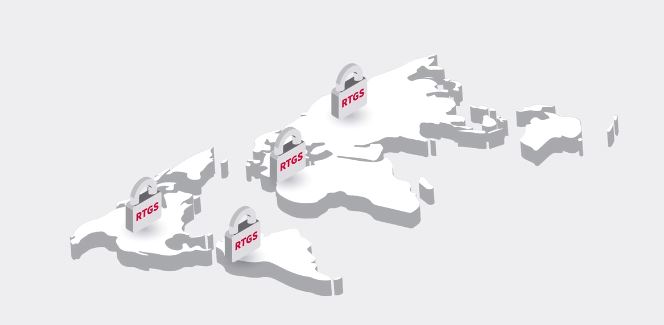RTGS Global kicks into gear to disrupt correspondent banking
RTGS Global, the cross-border liquidity network set-up by Worldpay and Clearbank creator Nick Ogden almost exactly a year ago, has launched the first stage of its operations.
Ogden announced the initiative, which aims to improve the speed and performance of international payments, at industry event Sibos in September 2019.
FinTech Futures sat down with Odgen back in November to learn more about the project, which you can read here.

“We’ve now got to the point where our containers – what banks use to connect to our infrastructure – are going to be available in the Azure marketplace,” says Odgen
Designed to remedy the issue of seeing liquidity between countries, RTGS claims it will be the first to make interbank liquidity visible. Hence, it seeks to disrupt the process of correspondent banking.
First stage of operations
RTGS has built its system on Microsoft Azure. Whilst it will preserve existing commercial banking relationships, RTGS wants to “completely overhaul” the machinery behind them.
A big part of this overhaul will include the automation of – until now – manual processes.
Although transparency in real-time domestic gross settlement has been achieved on a national level, on a global level there are few – if any – successful examples.
He tells Finextra that it has now finished building its technology. It is gearing up for “phase one” of operation. “Where have we got to now? The tech works, we’re into phase one,” says Odgen.
“The preliminary research we needed to do to ensure the market is there is done. The operational challenge we now have is – how do we sync this into various different institutions?”
RTGS is working with groups – Odgen names UK Finance as one – as it goes into its testing phase for the technology it has built.
“We’re trying to understand all the rules and come up with a status quo which will work for the majority of banks we’re speaking to,” adds Odgen. The company is aiming to reach commercial rollout by 2021.
Building with Microsoft
“We wanted blistering speed and transactional volume,” Odgen tells Finextra on why it went with Microsoft for the build.
The new venture wanted to be able to perform more than 30,000 transactions a second. This is then multiplied by 180 currency corridors, with each transaction taking around 30 milliseconds.
“Now scaling that globally is really very difficult,” Odgen explains. “It wouldn’t really have been possible a couple of years ago […] a lot of the technology simply didn’t exist.”
Azure, which first launched in 2008, works as a private internal network. It has allowed RTGS develop its platform since January this year.
Installing the software was one of the big challenges Microsoft helps RTGS solve. “We’ve now got to the point where our containers – what banks use to connect to our infrastructure – are going to be available in the Azure marketplace,” says Odgen.
Stage one has seen RTGS make its network available to 43,300 banks globally. Stage two, which is the technical integration involving Azure, is set to commence in autumn this year.
Read next: Bank of England picks Accenture as RTGS renewal partner









































